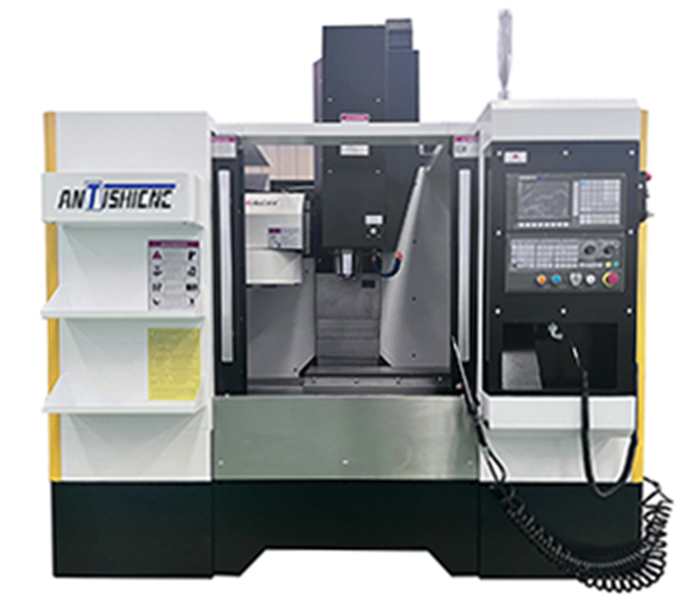The numerical control transformation of the ordinary milling machine is essentially to add a microcomputer control device to the ordinary milling machine, so that it has a certain degree of automation capability to achieve the predetermined processing goal. Its purpose is to make the original machine tool have a certain degree of flexibility, improve production efficiency and quality, and solve the processing problems of complex parts. It is simple and easy to transform the ordinary milling machine into an economical milling machine with a single chip microcomputer expansion system, which can ensure the machining accuracy of the parts, and has a significant effect on the processing of complex parts, especially the curved and convex surfaces.
(1) Design of mechanical parts
The most important part of the transformation of CNC machine tools is the transformation of the longitudinal and transverse feed mechanism and the design transformation of the control system, so that it has a more reasonable structure and a more comprehensive control system, which is convenient for its real application. in production.
1. Feed movement of the worktable
Because the main processing plane curve contours such as arcs and cams after the transformation, the microcomputer numerical control is adopted to realize the three-coordinate and two-axis linkage control. The longitudinal (axis), transverse (axis) and vertical (axis) movements of the worktable are respectively determined by After the stepping motor is reduced by a first-stage gear, it is driven by the ball screw nut pair. Due to the large load torque acting on the motor shaft during milling, a high-power stepping motor should be selected. However, it is difficult to drive a high-power stepper motor. The stepper motor has no overload capacity, and the torque drops a lot during high-speed movement, and it is easy to lose steps. To make the feed servo performance of the reformed milling machine better, use a DC servo motor to drive the reformed milling machine.
2. Structural design of mechanical parts
(1) The spindle rotation motion of the original machine tool is retained, and the lifting motion of the worktable is still manually operated. After the longitudinal and transverse feed reformation, it can not only motorize the computer numerical control processing of complex parts, but also manually complete the processing of simple parts or use it for Tool setting before CNC machining.
(2) Keep the motorized part of the original machine tool’s longitudinal feed, disengage the clutch, remove the hand wheel, connect the hand wheel shaft to the stepper motor through a pair of gears, and use the microcomputer numerical control system to control the longitudinal feed movement. During processing, the clutch is disengaged to stop the original motorized feed.
(3) Regarding the horizontal movement of the worktable, a reduction gear and a stepping motor are installed at the original handwheel installation position, and the microcomputer numerical control system is used to control the horizontal feed movement.
(4) A DC servo motor is used as the driving element. The shaft end of the servo motor is an optical shaft, gears and motor shafts, and motor shafts and transmission shafts adopt a conical ring keyless connection to eliminate the structure of the connector. The characteristic of this connection is that there is no need to open a keyway, and the relative angle of the two connecting pieces can be adjusted arbitrarily. Due to the wedging effect between the cone rings, the inner and outer rings are respectively deformed radially and elastically, which are connected with the sleeve by friction to eliminate the matching gap and ensure the neutrality.
(2) Hardware design of CNC system
The numerical control part adopts 8031 single-chip microcomputer of MCS-51 series to realize the main control of the whole system. Use 8031 to connect 3 pieces of 2764 (E-PROM), one piece of 6264 (RAM) and one piece of 8255 (expanded I/O), one piece of 8155 chip, expand into a simpler microcomputer control system. 2764 is used as a program memory, 6264 is used to expand the 8031 RAM memory, 8155 is used as a keyboard and display interface, and 8255 is used to receive the control signal of the multiple switch on the control panel.
When the single-chip microcomputer system controls a single stepping motor on the X and Y axis, it can realize the horizontal and vertical linear feed of the milling machine; when the XY axis is controlled to coordinate the linkage, it can realize the straight line, diagonal line, arc and compound in the horizontal plane. The processing of the trajectory can approximately compound the non-circular curve in the horizontal plane. On the basis of the original processing functions of the milling machine, its control accuracy and processing accuracy are much higher than that of an ordinary milling machine.
Concluding remarks
The numerical control transformation of the ordinary milling machine is essentially to add a microcomputer control device to the ordinary milling machine, so that it has a certain degree of automation capability to achieve the predetermined processing goal. Its purpose is to make the original machine tool have a certain degree of flexibility, improve production efficiency and quality, and solve the processing problems of complex parts. It is simple and easy to transform the ordinary milling machine into an economical milling machine with a single chip microcomputer expansion system, which can ensure the machining accuracy of the parts, and has a significant effect on the processing of complex parts, especially the curved and convex surfaces.



